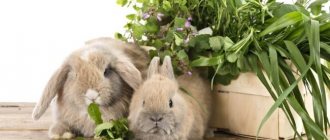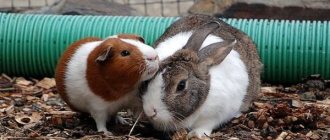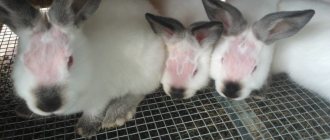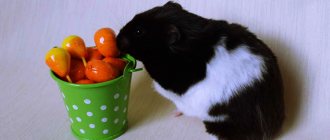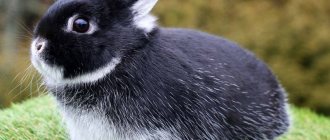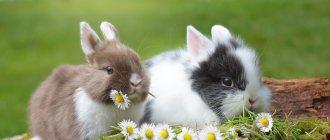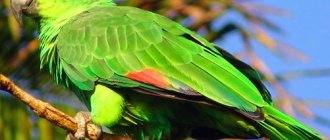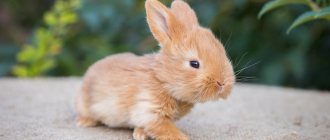A rabbit has thick warm fur, dietary meat, a gentle, affectionate disposition and absolute unpretentiousness in everyday life. It is not surprising that this animal is so popular both in rural areas and as a pet. Today, more than two hundred breeds of rabbits are known, including giants, whose weight exceeds 10 kg, and decorative crumbs, which in adulthood weigh no more than 300 g. In addition to size, breeds differ in the thickness and color of the skin, the shape of the ears, the speed of maturation and even character. But the most suitable for breeding are, of course, “average” ones weighing up to 5 kg, characterized by rapid maturation, fertility and good immunity.
What determines the price of an animal?
Prices for animals vary depending on the breed, their purpose, age and weight, availability of documents, pedigree and vaccinations.
First of all, it is necessary to distinguish between animals for breeding for wool, meat, fluff - and decorative breeds. Here prices differ significantly. Also, the cost of animals on the market and in the nursery is also completely different. Purebred animals with documents are much more expensive. Exhibition copies are also expensive, from 4,000 rubles and above .
Rare breeds cost from 6,000 to 12,000 rubles .
One-month-old rabbits (for meat or breeding) cost less than adults of the same breed on average - 200-500 rubles . More adult individuals - from 500 to 1500 rubles . Pedigree adult animals can cost from 2,500 rubles .
Producers of Russian breeds cost an average of 500-1,500 rubles . European or American manufacturers are somewhat more expensive.
What can rabbits get sick with?
Rabbits are animals that are very vulnerable to infectious diseases. The most dangerous infections that can kill a rabbit in a matter of hours are myxomatosis and hemorrhagic disease . Veterinarians recommend that animals be vaccinated when they reach one month of age.
Rabbits are also susceptible to parasitic diseases . Psoroptosis caused by the scabies mite is common . The rabbit's ear begins to bother him; he scratches the affected area until scratches appear. However, this disease is quite easy to treat.
If a rabbit eats fresh green grass, it can become infected with cysticercosis . The disease is extremely rare, but deadly.
Rabbit owners rarely encounter helminthic infestations. Much more dangerous is ringworm , which rabbits pick up very quickly and infect everyone around them, including the people caring for them. If you see baldness in the fur or the appearance of light scales on the rabbit’s skin, you should contact a veterinarian as soon as possible.
Signs that your rabbit is sick:
- Decreased activity, loss of appetite;
- Thinness;
- Hair loss;
- Discharge from the mouth or nose;
- Unpleasant odor from the animal;
Types and breeds of animals and how much do they cost?
- Animals for breeding (different breeds, Russian and foreign selection) - for breeding, for meat - cost from 200 to 1,500 rubles .
- Tribal - on average from 600 rubles to 2,000 .
- Decorative breeds (dwarf, fold-eared, short-haired, long-haired, red-eyed, Angora, colored and two-colored: from 1,000 to 12,000 rubles .
The most expensive breed is the dwarf Dutch . The price for this animal starts from 2,500 rubles and reaches 8,000 rubles , and for an animal with a pedigree it can be even higher.
Dwarf Dutch rabbit
How to keep a rabbit: tips for the owner
These animals are simple and unpretentious to care for. It is enough to allocate a spacious cage for the rabbit and clean it regularly : clean the feeder and change the water daily, change the bedding and clean the cage at least once a week.
It is important that the cage is reliably protected from drafts, moisture and direct sunlight.
Approximate prices
Animals for home breeding (usually small rabbits) cost 200-500 rubles on the market; depending on the breed, the price can reach up to 1,500 rubles .
A purebred animal for home keeping as a pet, purchased second-hand, can cost from 800 rubles to 3,500 rubles , depending on the rarity of the breed. But you can buy a “fake” animal (for example, it can be tinted to make it look like a purebred one) or a sick one.
The same animal, but with documents and vaccinations, will cost from 1,000 to 5,000 rubles , also depending on its rarity.
An animal taken from a nursery, with a pedigree, documents and vaccinated will cost from 3,000 to 7,000 rubles . Exhibition specimens will cost the buyer 4,000 - 7,000 rubles , the price varies depending on the breed, color, and pedigree. The rarest show-class breeds cost from 5,000 rubles and above .
What to look for when purchasing?
First, assess the health of your future pet. He should be active, jump and frolic in the cage, and be interested in surrounding events. Choose a rabbit with shiny fur, without bald spots or scabs, and with clean, clear eyes. It would be useful to look at the living conditions of the parents.
Inspect separately:
- Anus (there should be no traces of diarrhea, redness or odor);
- The shape of the back (a rounded or concave back indicates developmental defects);
- Ears, appreciate their symmetrical arrangement;
- Paws (the hind legs should be evenly lowered, the front ones without sores);
- Teeth (correct bite is when the upper teeth cover the lower teeth).
They buy baby rabbits at one and a half months of age. It is not recommended to purchase animals under 40 days old, as they may suddenly become ill and die.
Before purchasing, decide for what purpose you are purchasing the animal. If the little rabbit lives in the house as a member of the family, you can not pay attention to minor deviations from the standards: discrepancy in size, coat length, uneven color. These deficiencies do not affect the pet's health.
If you decide to start breeding rabbits, you should pay attention to breed-class animals. They may have slight discrepancies with the standards, but if properly crossed they will produce show-class purebred offspring.
Consider subsequent costs: how much castration costs and whether it is necessary to do it.
Breeder.
The best option from those presented, especially if it is a well-known breeder recommended to you by someone.
If not, then it is very easy to recognize a “low-quality” breeder. Such shots, by the way, are now very common. They make money from rabbits, ignoring the breeding rules established in the clubs.
How can you determine whether a breeder is worth trusting?
1. A good breeder should keep the animals clean.
You will immediately understand when you look at the condition of the animals. They should be cheerful and clean. The cell should have a lived-in, but not neglected appearance. There may be a smell in the room, but not repulsive, but barely noticeable (after all, several rabbits are no joke, and a baby, while learning to use the toilet, pees anywhere).
Unfortunately, this point cannot be determined if your breeder is located in another city.
2. A good breeder should answer all your questions.
All questions related to the parents of the rabbits, care, maintenance and feeding.
Request an advance copy of the pedigree. Even if the breeder is not a member of the club, he must provide documents. What if he knits rabbits in an unknown way? Also sick.
3. A good breeder should provide the baby rabbit with a supply of food for several days.
This is necessary for the safe transition of the baby to a new food.
4. A good breeder will help you with advice after selling the baby rabbit.
.
If, during a preliminary conversation, the breeder claims that the little rabbit will not grow up at all, that it can be fed with cabbage, and that a cage the size of a matchbox will be enough - do not believe it, this is a bad breeder. Get out of there.
Pygmy hare
The rabbit of this breed is like a large laboratory rat - white, with red eyes. However, the face, ears and limbs have markings.
Their most common color is black. There are also blue and brown shades.
One of the most desirable colors is the silver fox: a complex coloring based on black, blue or chestnut with a white edge. Dark hairs may be white at the tips, making the rabbit literally “silver.”
Baby rabbits do not immediately show the color of their spots, as they are born completely white. They grow up to 2 kg , sometimes more.
The optimal price for a dwarf hare rabbit is 2000-4000 rubles , in nurseries.
Representatives of the breed are a little timid by nature, but affectionate and loving.
Rabbits with the makings of champions will cost a little more - from 4500 rubles , if you wish, you can find a hare for 1000-1500 rubles .
Colored dwarf Dutch
A breed that was obtained in the Netherlands. It was officially recognized in 1940. To obtain it, they used hermelins and local small rabbits. Such animals appeared in Russia in 2013.
Characteristic:
- Weight: 800-1300 g.
- Ear length: 5-7.5 cm, straight.
- Wool: medium.
- Color: any.
- Price: 2-7 t.r.
Small rabbits whose weight should not exceed 1300 grams. The head has a rounded shape. The muzzle is wide, the eyes are round and large. The ears are located close to each other. The limbs are short and adjacent to the body.
Colored dwarf
The breed was founded by the German breeder Hoffmann. By 1957, he had received a fairly large population of different colors: Marder, black, gray, Siamese, blue, etc. This breed is distributed throughout the world and is the most numerous.
Peculiarities:
- Weight: 1000-1500 g.
- Ears: 5.5 cm, straight.
- Coat type: medium.
- Any colour.
- How much does it cost: 3-7 tr.
The body of a colored dwarf has the shape of a cylinder. The front legs are short, the head is quite large, but short. The coat is shiny, medium length, thick. There should be no dewlap. Any color is allowed.
Sale of baby rabbits
Ten years ago, it was not easy for a private individual who was not the owner or representative of a nursery to find buyers for rabbits. Now the situation has changed radically. Roughly speaking, there would be a product (in this case, baby rabbits), and there would be a buyer. This is the case not only in Russia, but also in countries such as Belarus and Ukraine. It's all about the growth in the number of Internet users and the emergence of such platforms as Avito and Yula. At the same time, all other methods of selling rabbits also remain relevant.
How to sell a rabbit
1. Internet
Online platforms such as Avito, Yula, OLX are the tools that will help you find the required number of buyers for your rabbits. Posting advertisements for the sale of animals on Avito seems to cost a fee, but it’s worth it. Before submitting an ad, I recommend studying the prices of other sellers in your region on the selected online platform. Your prices should not be inflated, however, it is up to you.
In addition to online platforms, it makes sense to publish ads for free on much less visited ad sites. Based on my experience, I can say that sometimes there is a return on such publications.
Also, don’t forget to post ads for free in social networking groups and forums.
2. Press
Today, there are still newspapers and magazines about animals in which you can submit advertisements for the sale of young animals for free.
Read more: Announcements in the press.
3. Pet stores
Many pet stores buy baby rabbits for resale, but usually at a low price.
4. Selling near the metro
Advantages: Can be sold at higher prices.
Disadvantages: requires free time; may be fined by the police; additional stress and risk of illness for the rabbits.
Features: must be sold in good and warm weather.
5. Word of mouth
You can offer it through your friends. It's also a good idea to hand out business cards to customers, asking them to recommend you to someone they know.
6. Posting advertisements
Posting advertisements may not produce results. Now they pay much less attention than before.
From hand.
Nowadays this purchase option is quite common. People get rabbits and for some reason then sell them. This is, of course, a real chance for you to buy a dwarf rabbit.
Pros:
- The opportunity to buy a purebred rabbit + cage for a very reasonable price (more economical than buying a rabbit separately and all the equipment for it separately J).
- A clear understanding of what size your pet will be (dwarf rabbits are usually sold after the age of 4-5 months, when they are already 80-90% grown).
Flaws:
- The rabbit already has a formed character
. Which they may not tell you about. It is quite difficult to re-educate a rabbit, it is much easier to educate from 2-3 months, but this is my opinion. Maybe this point is a virtue for you? And you are not afraid of serious tasks. - The rabbit may already be quite old or sick
, which they may also keep silent about. You yourself understand what the result of this is.
Mini lop lionhead
These animals were obtained in England in the early 2000s, but they are not yet officially recognized. The best representatives of the lion-headed dwarf and mini lop breeds were used for breeding.
Peculiarities:
- Weight: 1500-1600 g.
- Ears: 21-25 cm, hanging.
- Coat length: medium, long in the head area (up to 7.5 cm).
- Any colour.
- Cost: 6-13 tr.
These animals are quite miniature. A characteristic feature of the breed is a very thick mane on the head, while the hair on the body is short (no more than 2 cm). The body is dense, strong, the back is rounded. Lion-headed mini-lops have a round head proportional to the body.
Rabbit food
The diet should contain:
- Vegetables, root vegetables (fresh and boiled);
- Cereals and seeds (wheat, oats);
- Legumes;
- Hay;
- Fresh grass;
You can use special feed. It is recommended to feed animals in accordance with the regime: twice a day at the same time . Particular attention is paid to pregnant and lactating rabbits. They need enhanced nutrition: a wet mixture of boiled vegetables, cabbage, pumpkin and mixed feed is prepared for the rabbits.
